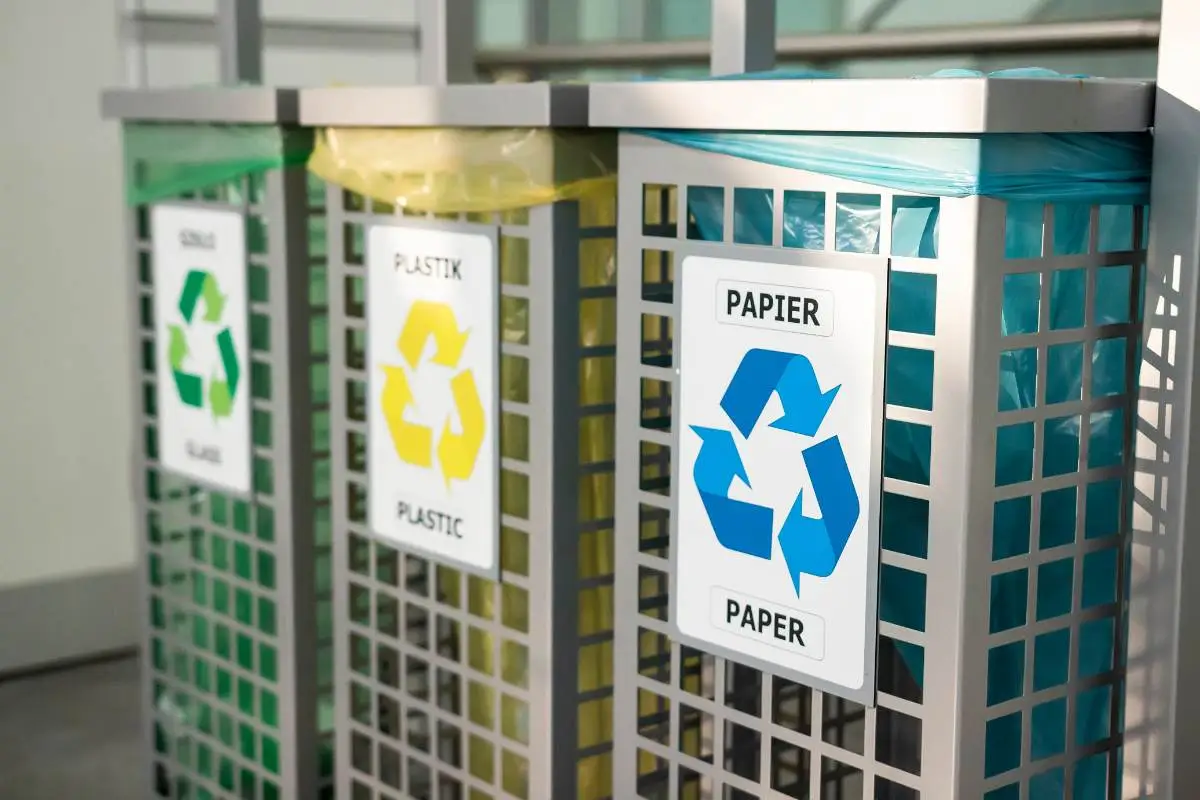Streamlining Recycling: The Ultimate Waste Separation Guide
Introduction:
Are you concerned about the impact of waste on our environment? Do you want to make a difference but don’t know where to start? Look no further! In this comprehensive guide, we will show you how recycling can be made easy. By following our step-by-step instructions, you’ll be able to separate and recycle waste with minimal effort. Get ready to become an eco-warrior and join the cause for a greener future. Let’s dive in!
Section 1: Why Recycling Matters
Why should we recycle?
Recycling is crucial for preserving our environment for future generations. It helps reduce pollution, conserve resources, and save energy. Additionally, recycling helps mitigate the effects of climate change by reducing greenhouse gas emissions.
The environmental impact of waste
When waste ends up in landfills, it releases harmful chemicals and greenhouse gases, contributing to air and water pollution. Recycling prevents these harmful substances from entering the environment, protecting ecosystems and human health.
Section 2: The Benefits of Recycling
Reducing the demand for raw materials
Recycling helps conserve natural resources by reducing the need for extracting new raw materials. This preserves forests, reduces water usage, and saves energy.
Energy conservation
Recycling requires less energy than producing new items from raw materials. By recycling, we can save energy and reduce carbon emissions.
Section 3: Understanding Different Types of Waste
Organic waste
Organic waste includes food scraps, yard waste, and other biodegradable materials. This type of waste can be composted, creating nutrient-rich soil for gardening.
Plastic waste
Plastic waste is a major environmental concern due to its long degradation time. Understanding the different types of plastic and their recycling symbols is essential for proper disposal.
Section 4: Sorting Waste: A Step-by-Step Guide
Step 1: Set up recycling bins
Place separate bins for different types of waste, such as paper, plastic, glass, and metal. This makes sorting and recycling easier.
Step 2: Educate yourself on local recycling guidelines
Research and understand the recycling guidelines specific to your city or region. Some areas have different recycling rules and requirements.
Step 3: Rinse and clean recyclables
Before recycling, rinse and clean containers to remove any food residue. This helps prevent contamination in the recycling process.
Step 4: Flatten cardboard and paper
Flatten cardboard boxes and larger paper items to save space and make transportation more efficient.
Section 5: Recycling at Home: Tips and Tricks
Create a recycling station
Designate a specific area in your home for recycling bins to make it easy for everyone in the household to participate.
Reduce and reuse
Before throwing items in the recycling bin, consider ways to reduce consumption and reuse items. This helps minimize waste generation.
Section 6: Recycling on the Go: How to Stay Eco-Friendly Outside
Use reusable bags and water bottles
Carry reusable bags for shopping and opt for a reusable water bottle instead of single-use plastic bottles.
Look for recycling bins
When outside, look for recycling bins to properly dispose of your waste. If none are available, hold onto your recyclables until you find a proper recycling facility.
Section 7: Recycling in the Workplace: Engaging Your Colleagues
Educate your colleagues
Spread awareness about the importance of recycling and educate your colleagues on proper recycling practices. Encourage them to participate in office recycling programs.
Implement recycling initiatives
Create recycling initiatives such as paperless policies, setting up recycling stations, and providing training on recycling practices.
Section 8: The Dos and Don’ts of Recycling
Do:
- Follow local recycling guidelines
- Rinse and clean recyclables
- Flatten cardboard and paper
Don’t:
- Put non-recyclable items in the recycling bin
- Include food-soiled items
- Mix different types of waste together
Section 9: Common Recycling Mistakes to Avoid
Contaminated recyclables
Avoid including items with food residue or non-recyclable materials in your recycling bin, as it can contaminate the entire load and render it unrecyclable.
Wishful recycling
Do not put items in the recycling bin that your local recycling facility does not accept. Check the guidelines to avoid wishful recycling.
Section 10: Recycling Solutions for Everyday Items
Paper and cardboard
Recycle paper and cardboard products, such as newspapers, magazines, and cardboard boxes.
Plastic bottles and containers
Recycle plastic bottles and containers labeled with the recycling symbol.
Section 11: Recycling Electronics and Batteries: What You Need to Know
E-Waste recycling
Dispose of old electronics responsibly by recycling them at designated e-waste collection points. Electronics contain valuable materials that can be reused.
Battery recycling
Batteries can be recycled to prevent hazardous materials from entering the environment. Find local battery recycling centers or programs.
Section 12: Recycling Hazardous Materials Safely
Proper disposal of hazardous materials
Hazardous materials, such as paint, chemicals, and batteries, require special handling. Research local hazardous waste disposal guidelines.
Take advantage of collection events
Many communities offer collection events for hazardous materials. Take advantage of these opportunities to dispose of hazardous waste safely.
Section 13: Recycling for Kids: Teaching the Next Generation
Make recycling fun
Engage children through educational games, crafts, and activities that demonstrate the importance of recycling.
Lead by example
Show children the importance of recycling by incorporating it into your daily routine and explaining the impact it has on the environment.
Section 14: How Recycling Impacts the Economy
Job creation
The recycling industry creates jobs in collection, sorting, processing, and manufacturing. Recycling supports local economies.
Cost savings
Recycling reduces waste management costs, as it is often cheaper than landfill disposal. It also conserves resources, reducing the need for costly raw material extraction.
Section 15: The Future of Recycling: Innovations and Trends
Technological advancements in recycling
New technologies are emerging that can improve recycling processes, such as robotic sorting systems and advanced recycling facilities.
Circular economy
The concept of a circular economy aims to eliminate waste by designing products that can be recycled or repurposed at the end of their life cycle.
Section 16: Taking Recycling to the Next Level: Get Involved!
Join recycling initiatives
Participate in local recycling initiatives, community clean-ups, and volunteer at recycling events to make a positive impact.
Spread the word
Share your knowledge about recycling with others through social media, blogs, or community presentations. Encourage others to join the recycling movement.
Conclusion
Recycling plays a crucial role in creating a greener future. By following the steps outlined in this guide, you can make a significant difference in reducing waste, conserving resources, and protecting our environment. Start small, educate yourself and others, and together, let’s build a sustainable world for generations to come!





